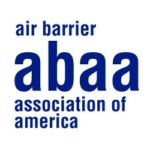Air tightness testing is a process in which the building envelope is tested to quantify the air tightness. The test measures air leakage rates through a building envelope under controlled pressurization and depressurization.
Building testing is not a mandatory test prescribed in building codes, but a performance-based option that many designers are requiring. The only requirements for whole building testing are in the State of Washington, the United States General Services Administration and all United States Army Corps of Engineers projects.
There are many standards worldwide that detail how to perform this test, some of these include:
- The United States Army Corps of Engineers Air Leakage Test Protocol for Building Envelopes
- ISO 9972:2006 – Thermal performance of buildings — Determination of air permeability of buildings — Fan pressurization method
- ASTM E779 – Standard Test Method for Determining Air Leakage Rate by Fan Pressurization
- ASTM E1827 – Standard Test Methods for Determining Airtightness of Buildings Using an Orifice Blower Door
- ASTM E3158 – Standard Test Method for Measuring the Air Leakage Rate of a Large or Multizone Building
- ATTMA – Measuring Air Permeance of Building Envelopes (Dwellings)
- ATTMA – Measuring Air Permeance of Building Envelopes (Non-Dwellings)
For more resources on whole building testing, please visit the Whole Building Design Guide (wbdg.org) – a program from the National Institute of Building Science (NIBS).
ABAA – STANDARD METHOD FOR BUILDING ENCLOSURE AIRTIGHTNESS COMPLIANCE TESTING
The Air Barrier Association of America (ABAA) published a new standard for whole building airtightness testing. The standard is called “Standard Method for Building Enclosure Airtightness Compliance Testing”.
This standard is the result of years of work by a dedicated group of professionals and industry experts that numbered over 50 people. The baseline for this document was the previously published joint test protocol put together by ABAA and the United States Army Corps of Engineers (USACE) developed back in May 2012.
Work is now underway to present this to ASTM and develop an ASTM standard. A work item (WK35913) has been created under the E06 Committee on Performance of Buildings.
Special thanks to Mr. Terry Brennan who chairs the ABAA Whole Building Airtightness Committee and all committee members for their support and input.
ABAA WHOLE BUILDING AIR TIGHTNESS TESTING – AIR LEAKAGE UNIT CONVERSIONS SPREADSHEET
The ABAA Whole Building Air Tightness Testing Standards Committee has developed a spreadsheet for conversion of units typically found when conducting whole building air tightness testing.
STATE & CITY REQUIREMENTS FOR WHOLE BUILDING TESTING
Non-residential Buildings permitted under the 2012 edition of the State Energy Code must be tested in accordance with ASTM E779. The specified target is 0.40 cfm/ft2 (2.00 L/s.m2) when tested at a pressure differential of 0.3 inches of water (75 Pa).
Commercial buildings require a whole building test conducted, as per the 2015 Seattle Energy Code. Section C402.5.1.2 provides a performance requirement of 0.30 cfm/ft2 at a pressure differential of 0.3 inches water (1.5 L/s/m2 @ 75 Pa. A read only copy is available from the Seattle Department of Constructions and Inspections website.
- Download a copy of the 2015 Seattle Energy Code – Chapter 4: Commercial Energy Efficiency.
On May 31, 2012 The California Energy Commission (CEC) unanimously approved the revision of the state’s energy efficiency standards for new homes and commercial buildings. As part of the revision of the energy code, the CEC incorporated the air tightness testing protocols established in RESNET’s Chapter 8, “RESNET Standard for Performance Testing and Work Scope”. The revised standard will take effect on January 1, 2014.
For more information, please see the news release here.
